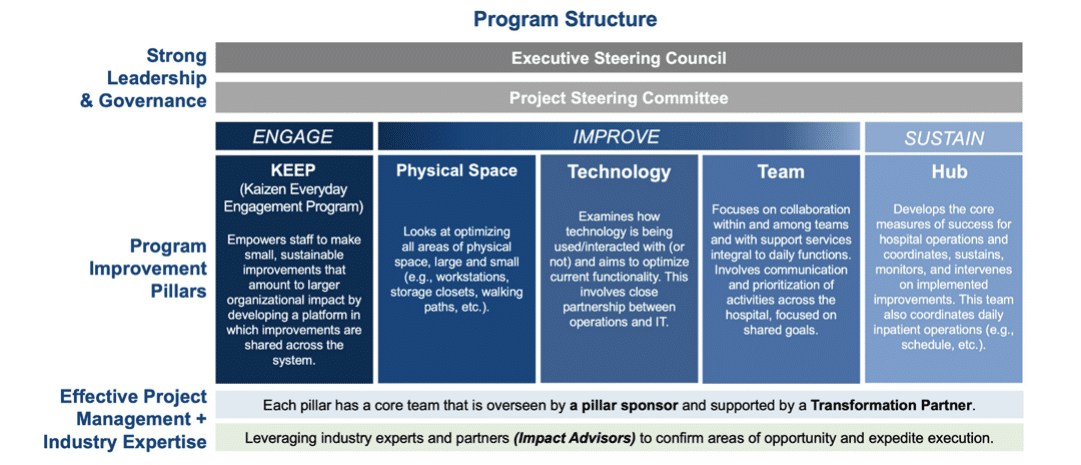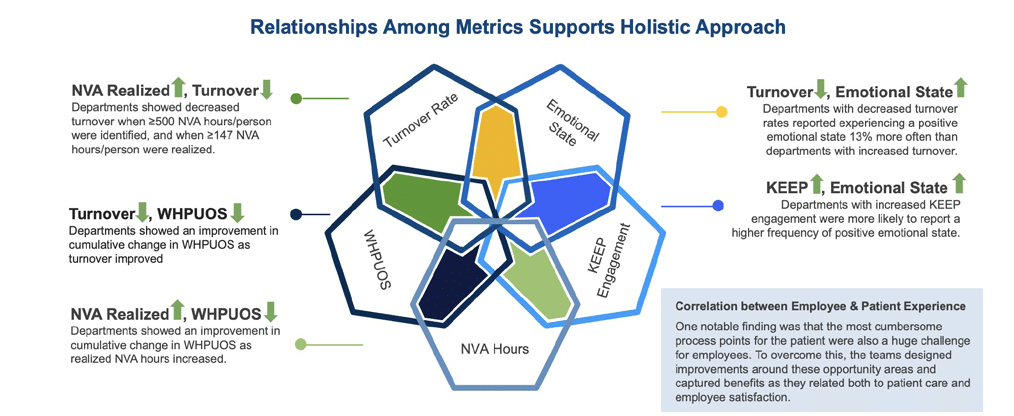Staff-led Transformation
A newly combined health system comprised of 9 community-based hospitals and over 300 care locations and employing over 27,000+ team members is fully committed to being a workplace of choice where team members come to build their careers and to advance a culture where all feel heard, valued, and important.
To create this work environment, the organization launched a Transformation Team Member Experience (TMX) initiative to design a care delivery model that:
- Increases team member engagement and satisfaction
- Empowers team members to make small, sustainable improvements
- Leverages technology to improve team member experience through increased efficiency
- Allows team members to practice at the top of their license
“We’ve learned that creating a working environment where our team members feel that they are contributing efficiently – at the top of their license – is what creates a workplace of choice. We launched the Transformation TMX because we understand that it is our people who make our vision happen. And our vision of safe, seamless and personal experiences refers to the team member experience every bit as much as it does the patient experience."
Chief Growth Officer
Program Approach and Results
Together, the health system and Impact Advisors created a full suite of tools to frame the project, assess operational waste, drive improvement activities, measure outcomes, and hardwire sustainability.
- A Department Review Lifecycle and Methodology laid the foundation for how department observations would be conducted and how non-value-added (NVA) hours would be identified and tracked.
- Improvement Pillars helped organize opportunities for implementation, allowing NVA hours to get realized.
- Impact Assessments, conducted periodically, gauged performance across a variety of process and outcome metrics to ensure “stickiness” of improvement efforts and sustainment of the overall mission of the work.

Through the TMX mission, the health system partnered with Impact Advisors to remove over 1 million non-value-added hours contributing to waste in 46 departments across 2 hospitals, which led to improvements in Turnover Rate, Worked Hours per Unit of Service, and Emotional State.

Lessons Learned and Critical Success Factors
By building a transparent waste review process with a focus on employee engagement, the health system was able to gain the trust of front-line personnel to candidly share the daily issues they face without fear of retaliation. Gaining buy-in from middle management leaders was tougher, but they began to lean in as improvements were seen. To continue the pace and to broaden the spread of enthusiasm, the Team Pillar, originally focused on collaboration among immediate team members, had to shift its approach to better support interdepartmental improvement efforts. Strong executive-level support was a defining factor in the success of this initiative. Creating strong feedback loops helped to build trust, transparency, and drive meaningful outcomes.

